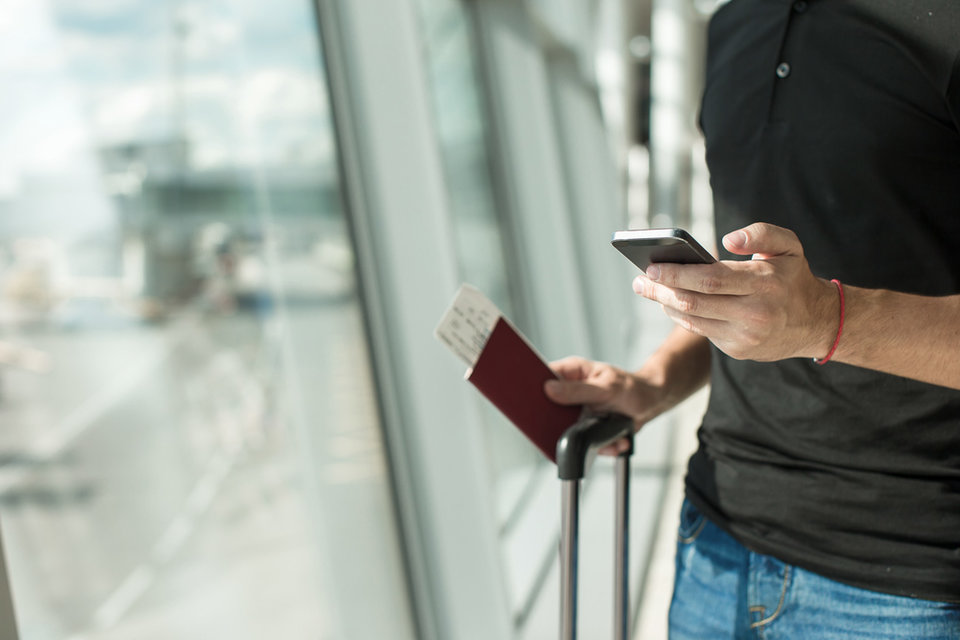Security
Pre-flight checks: how countries handle airport security procedures
Japan has introduced new guidelines for the handling of airport security checks to prevent terrorists and other incidents. As the country’s previous approach to airport security, which relied on the airlines, was considered one-of-a-kind, Ilaria Grasso Macola profiles what other countries are doing for airport security to keep passengers and staff safe.
The Japanese Government has recently introduced a bill for the revision of the country’s aviation law, establishing the first official guidelines for the handling of airport security checks.
Formulated to prevent incidents related to terrorism and hijacking, the ‘Basic Policy for the Prevention of Harmful Acts’ will clarify roles and foster cooperation between the government, airports and airlines. The bill will also aim to improve the quality and quantity of security inspections.
This new policy is set to shake things up, as Japan has always relied on airlines to carry out airport security inspections, usually outsourcing it to private security firms.
To be implemented at the beginning of next year, the new law will strengthen existing aviation security measures, such as making it mandatory for passengers to undergo security inspections or staff to issue instructions.
Experts believe things will not change the passenger level, but it will help the industry avoid security breaches, such as the incident in 2019 in Osaka, when a knife in a passenger carry-on bag passed through security.
While the model employed until now by Japan was considered unique, we take a look at what other countries are doing in terms of airport security checks.
American airlines
As previously reported, while it’s true that the concept of airport security checks evolved over decades, 9/11 represented a watershed moment all around the world. In the US, that fateful day led to the creation of the Transportation Security Administration (TSA) – a US government agency dedicated to airport security.
Post 9/11 airport security checks saw the incorporation of different measures, including the screening of carry-ons, reporting of unattended packages and pat-down procedures. The “See Something, Say Something” motto – which asks citizens to report suspicious activity – was also created.
As reported by the TSA, before the Covid-19 pandemic agents would screen 4.9 million carry-on bags daily, making sure that travellers had removed liquid gels and, at a certain point, personal electronic devices. The number of hold luggage bags checked every day amounted to 1.4 million.
Millimetre wave imaging is another technology that the TSA and airport security providers around the world use because it replaces pat-down techniques, allowing for no physical contact.
To maintain high security levels, the TSA has also introduced a pre-screening programme that aims to identify low and high-risk passengers, by checking against travellers’ watchlists.
Human rights groups have condemned the methods used by the TSA multiple times, and body scanners were found more prone to false alarms when black women or people that wore turbans and wigs passed through them, forcing them to undergo intrusive search methods.
The EU
Tightened rules for airport security in the EU were established post 9/11, when the European Commission outlined the common rules and basic standard for all civil airports in the Union.
Basic standards included screening of passengers and hold luggage, as well as airport security and aircraft security checks.
According to the bill, member states needed to designate a single authority competent for aviation security, as well as set up a national civil aviation security and quality control programme. On the other side, operators should implement both airports’ and air carriers' security programmes.
The bill was updated a few times, with regulations supplementing initial protocols, adding guidelines on the transport of liquids, the use of security scanners and the adoption of alternative security measures.
With the advent of the Covid-19 pandemic, airport security had to adapt. In June 2020, the European Union Aviation Safety Agency (EASA) published guidelines on health and safety protocols to adopt in European airports.
To protect both staff and passengers, EASA recommended thstoperators to appoint a coordinator to ensure that Covid-19 measure would be applied uniformly by all stakeholders.
Emphasis was also placed on implementing social distancing measures, such as enhanced hygiene protocols and implementing physical distancing.

Credit:
Israel
Considered the safest airport in the world, Tel Aviv’s Ben Gurion Airport has become an example in terms of airport security.
Security procedures begin at the Airport Operations Centre, which monitors every aircraft coming into Israeli airspace, checking each passenger and cabin crew member.
At Ben Gurion, things differ when travellers fly out of the country, as the level of scrutiny is higher than most hubs in the world. The measures implemented by Israeli airport security include checkpoints for vehicles and interrogation of passengers.
The last measure, which take place before scanning travellers’ bags, is justified by officials by the country’s geo-political position, which they believe makes it more prone to potential threats.
Over the years, the security methods that Israel implements at its airports have raised more than a few eyebrows as they have often been accused of racial profiling, especially towards the Arab and Palestinian travellers passing through.
In 2016, human rights organisation Adalah denounced the techniques implemented at Israeli airports, including strip searches and alleged targeting of Arab passengers, by claiming they were illegal.
“The Flight Law (Security in Civil Aviation) does not authorise Israeli airline security personnel to ask passengers to strip naked and to conduct searches or to escort them to the boarding gates,” wrote Adalah lawyer Fady Khoury in a letter to General Attorney Avichai Mandelblit and the Israel Airports Authority.
It will be folly if we don’t use the opportunity presented by Covid-19 to do things better in the future
Main image: Haneda Airport in Tokyo is one of the Japanese airports to implement the new security procedures. Credit: simpletun / Shutterstock